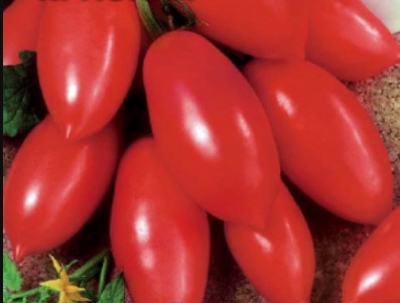
- Category: grade
- Growth type: indeterminate
- Appointment: fresh consumption, for juice, for ketchup and tomato paste
- Ripening period: mid-season
- Ripening time, days: 105-108
- Growing conditions: for film greenhouses, for greenhouses
- Marketability: high
- Transportability: Yes
- Bush size: tall
- Bush height, cm: 180
Icicle red is a tomato variety that may be of interest to lovers of canned tomatoes, as well as to summer residents who are not used to waiting for a long time for the crop to appear. Let's get to know this variety better.
Description of the variety
Vigorous vegetation and branching are characteristic of the Red Icicle variety. The bush is of an indeterminate type, tall, reaches a length of 180 cm. The first inflorescence is formed above 6-7 leaves. In total, 5-6 clusters are formed, in which 12-15 fruits develop.
The variety is frost-resistant, therefore it can be cultivated both in the southern regions and in Siberia, the Urals, Altai.
The main qualities of the fruit
Tomatoes are large, their weight is 170-200 g, they develop in the form of a cylinder, the skin color of a ripe fruit is red. Tomatoes are notable for good marketability, keeping quality and transportability.
Taste characteristics
The taste is harmonious, pleasant, harmoniously combining sweetness and sourness. The pulp is dense, so it is perfect for making tomato juice, ketchup or other sauce. Also, the taste is clearly revealed when consumed fresh, for example, in a vegetable salad.
Ripening and fruiting
Icicle red belongs to varieties with a mid-ripening period. The first tomatoes can be enjoyed 105-108 days after germination. The type of fruiting is long, harvesting occurs from July to August.
Yield
The variety is considered to be high-yielding, its productivity is 8.5-9.0 kg / m2.
The timing of planting seedlings and planting in the ground
Sowing is carried out from March 20 to April 10. Before planting, the planting material is recommended to be processed in a solution of potassium permanganate in order to avoid the spread of infections in the future. The seeds are buried in a previously prepared substrate by 1-1.5 cm and the container is removed in a warm place under the film. It is better to fill the planted seeds with sifted soil so that the layer lays down evenly.
When the first shoots are pecked, the film can be removed, and the container can be placed in a well-lit place. To make the seedlings feel comfortable, follow these rules:
- moisten the soil with drip so that moisture does not get on the bushes, twice a week;
- maintain a temperature regime of 20-22 degrees;
- dive seedlings when 1-2 leaves appear;
- start hardening 7-10 days before transplanting to a summer cottage, every day increase the time the plants stay in the fresh air.
Transplanting bushes to the street is carried out at the age of 60-65 days.

Growing tomato seedlings is an extremely important process, because it largely depends on whether the gardener can harvest at all. All aspects must be taken into account, from seedbed preparation to planting in the ground.
Landing scheme
The presented variety is grown in a greenhouse, especially in the northern regions. Planting is carried out according to the scheme of 3-4 plants per 1 sq. m.

Growing and caring
Caring for tomatoes does not differ from the standard scheme and includes pest control, regular watering and loosening, as well as top dressing. The following points require attention:
- pinching should be done once a week;
- the variety requires a garter to the trellis;
- it is necessary to form plants, the formation of 1-2 stems has proven its effectiveness.




A plant needs different micronutrients at each stage of growth. All fertilizers can be divided into two groups: mineral and organic. Folk remedies are often used: iodine, yeast, bird droppings, eggshells.
It is important to observe the rate and period of feeding. This also applies to folk remedies and organic fertilizers.
Disease and pest resistance
The variety is rarely affected by diseases, and widespread cracking of the fruit is not typical for it. However, late blight does not always bypass culture. For prevention, treat the bushes with preparations with copper, for example, Bordeaux liquid. If defeat could not be avoided, then funds "Fundazol", "Fitosporin", "Ridomil" will help.
Sometimes the variety gets sick with septoria - the drugs "Tsineb" and "Horus" will help from this ailment.
From insects, tomatoes often fall prey to aphids. Decoctions of bitter herbs, soap solution, garlic infusion protect from this pest.



























































































